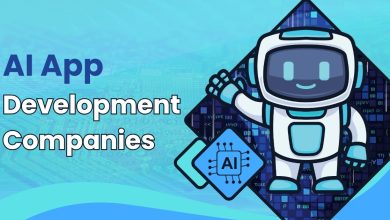
Current Uses of AI in Healthcare
- AI is no longer speculative—it is shaping everyday medical practice. Across the sector, AI is helping clinicians make faster decisions, accelerating research discoveries, and giving patients tools to take better care of themselves.
- Diagnostics: AI-powered imaging platforms assist radiologists by flagging abnormalities in mammograms, CT scans, and MRIs, helping to detect cancers, strokes, and other conditions earlier and with greater precision (Rajkomar, Dean & Kohane, 2019).
- Drug Discovery: Generative AI models can replicate clinical trial outcomes, predict protein structures, and design new molecules—cutting years off traditional drug development timelines (Jumper et al., 2021).
- Operational Efficiency: Predictive algorithms are helping hospitals optimize staffing, anticipate patient surges, and reduce administrative bottlenecks. These behind-the-scenes improvements directly affect safety, costs, and patient experience (Nong et al., 2025).
- Patient Engagement: Virtual assistants and health apps powered by AI provide 24/7 chronic disease support, medication adherence reminders, and triage services. For patients in rural or underserved communities, these tools often fill critical gaps in access to care (Wah, 2025)
Expected Future Uses of AI in Healthcare
Looking ahead, AI will evolve from enhancing tasks to fundamentally reshaping the delivery of care.
– Precision Medicine: AI will merge genomic data, lifestyle factors, and social determinants to personalize treatment plans, moving beyond one-size-fits-all protocols.
– Predictive Care: Algorithms will identify patients at risk for complications (such as heart failure readmissions or sepsis) days before symptoms worsen, giving providers a critical head start.
– Ambient Clinical Intelligence: AI-driven voice tools will soon capture insights in the exam room and suggest treatment options—much more than automated scribing.
– Cross-System Coordination: AI could connect disjointed data across hospitals, payers, and community organizations, reducing duplication and plugging gaps in care
These opportunities are substantial, but their benefits will only be realized if systems are built responsibly.
How Do We Make AI Better?
Building powerful AI that is safe, equitable, and trustworthy requires deliberate attention in five key areas:
- Checking for and Reducing Bias
Bias remains one of the greatest risks. Models trained primarily on Western, urban, or majority populations can misdiagnose or undertreat underrepresented groups. For example, dermatology AI trained mostly on lighter skin tones has performed poorly on darker skin (Obermeyer et al., 2019). - Reporting Uncertainty When It Exists
Doctors routinely communicate confidence levels in their interpretations. AI models should do the same. Too often, algorithms give binary answers—“disease present” or “absent”—without confidence ranges.Recent advances in explainable AI now allow models to flag uncertainty, letting clinicians weigh outputs appropriately. Quantifying uncertainty will reduce over-reliance on machine recommendations (Begoli, Bhattacharya & Kusnezov, 2019).
- Bringing Context to Patient Care
Medicine is more than data points. Two patients with identical lab results may need different treatment plans based on comorbidities, goals of care, or social support. Today’s AI often lacks this contextual awareness.Next-generation tools must integrate structured and unstructured data so recommendations reflect the full patient story, including clinical notes, patient-reported outcomes, and social determinants of health (Babyn, 2023). Clinicians remain indispensable in bridging algorithmic insights with human experience.
- Building Human-in-the-Loop Protections
AI should augment—not replace—clinical judgment. Human-in-the-loop safeguards ensure providers remain the ultimate decision-makers.For example, AI can highlight the top three likely diagnoses from a radiology scan, but it is the radiologist who interprets, validates, and communicates the final result. This balance ensures accountability while making clinicians more effective.
- Regulation as a Pillar of Trust
Regulation must be viewed as a foundation, not an obstacle. The EU AI Act already places most AI-powered medical devices in the “high risk” category, requiring transparency, oversight, and post-market surveillance (European Parliament; Council of the European Union, 2024). U.S. regulation remains fragmented, though the FDA and states are moving toward shared principles (U.S. Food and Drug Administration, 2025).
For healthcare, smart regulation means transparency (clear explanations of training data, assumptions, and limitations), auditability (systems that can be stress-tested and explained to regulators, clinicians, and patients), and ongoing monitoring (safety checks that account for how quickly models can drift).
Rather than stifling innovation, these measures create the trust required for widespread adoption.
Looking Ahead
AI is now a permanent feature of healthcare, but its ultimate impact will depend on how responsibly it is built, regulated, and deployed. The challenge is not to pit AI against human judgment, but to design systems where each complements the other: AI provides rapid knowledge integration, while humans ensure empathy, ethics, and accountability.
Healthcare leaders who succeed will be those who embed bias checks, uncertainty reporting, contextual awareness, human oversight, and thoughtful regulation into their designs. That is not just sound governance—it is the foundation of trust in an AI-powered future of care.



